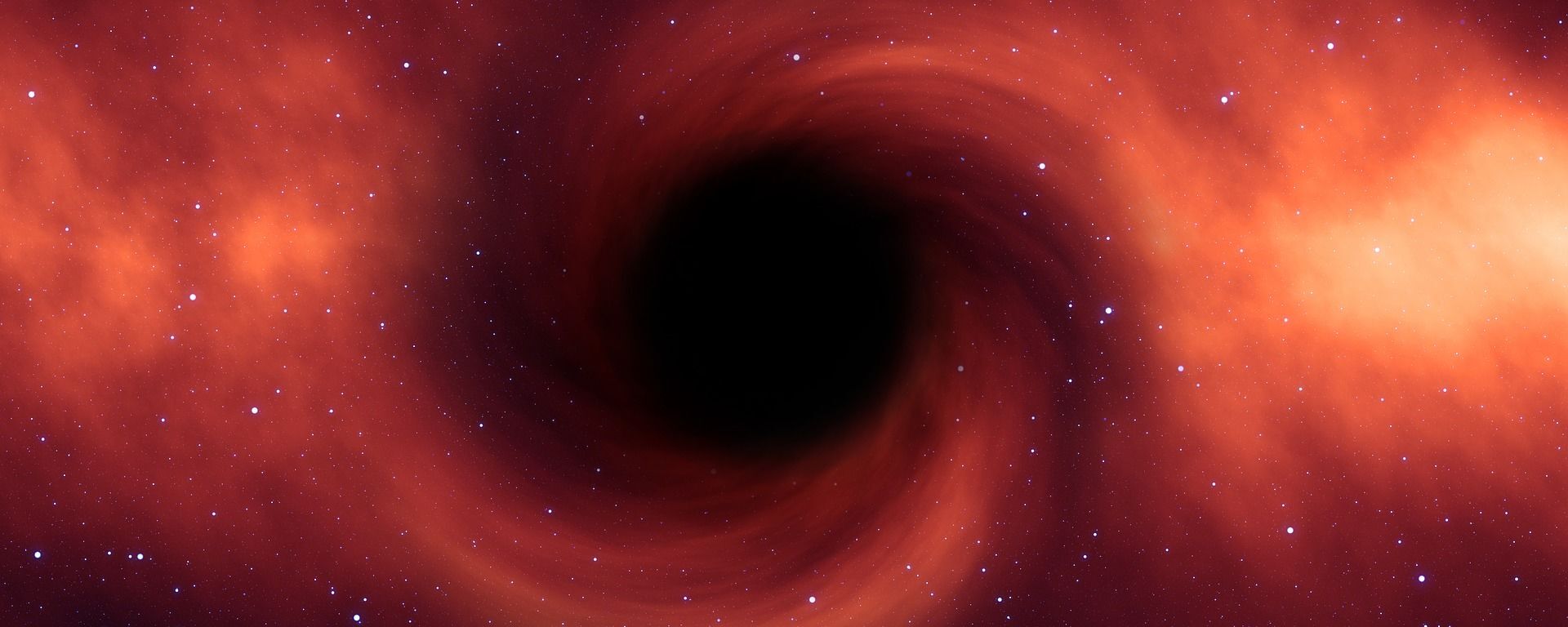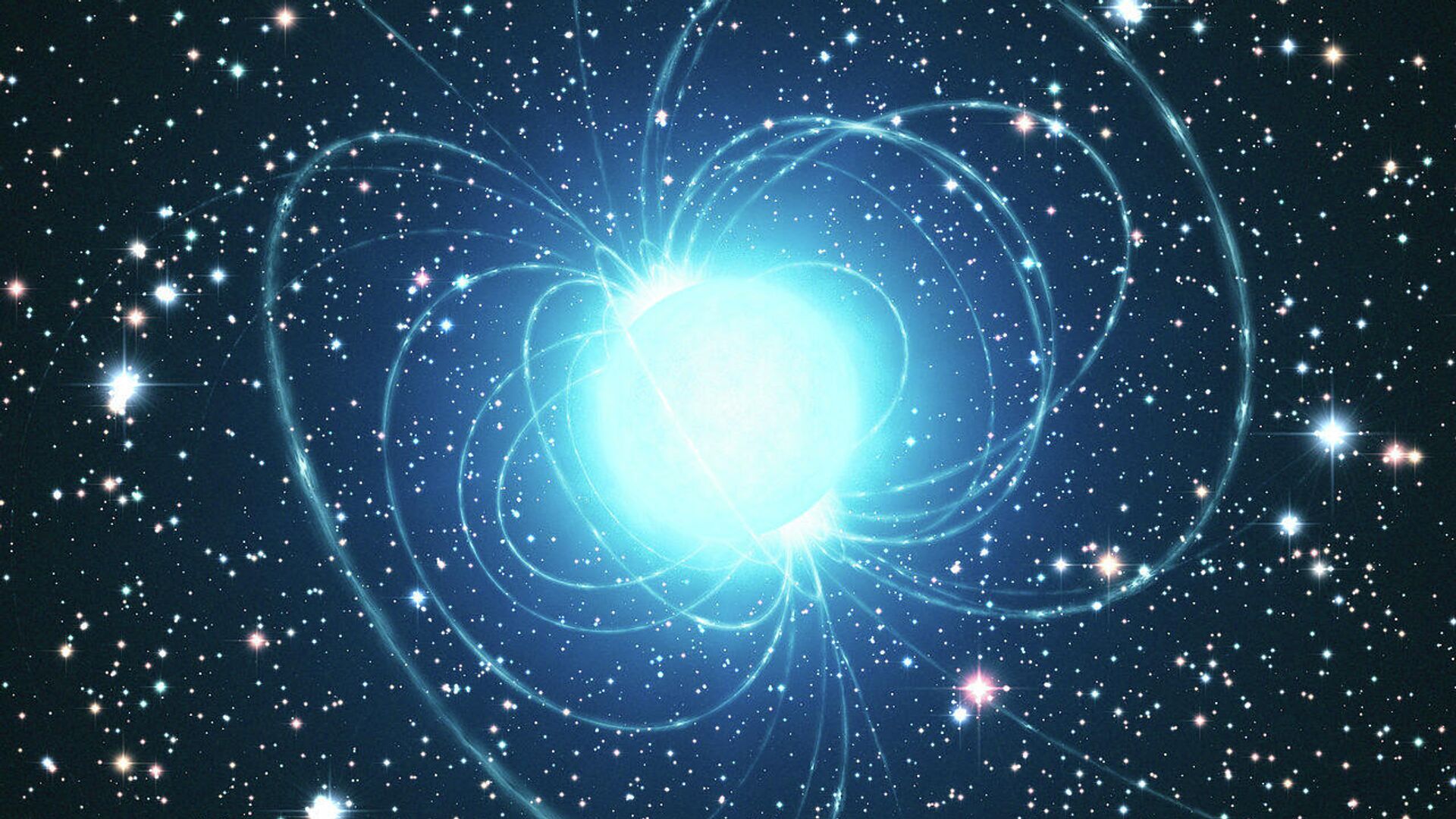https://sputnikglobe.com/20220127/radiation-emitting-space-object-identified-as-one-of-the-brightest-radio-sources-in-the-sky-1092554300.html
Radiation-Emitting Space Object Identified as 'One of the Brightest Radio Sources in the Sky'
Radiation-Emitting Space Object Identified as 'One of the Brightest Radio Sources in the Sky'
Sputnik International
The unusual object was spotted by Curtin University honours student Tyrone O'Doherty using the Murchison Widefield Array (MWA) telescope. 27.01.2022, Sputnik International
2022-01-27T12:17+0000
2022-01-27T12:17+0000
2022-01-27T12:17+0000
science & tech
space
energy
detection
object
https://cdn1.img.sputnikglobe.com/img/07e6/01/1b/1092554940_0:93:1281:813_1920x0_80_0_0_a3142a3971564a05035ddea2bfa69dae.jpg
A team of researchers led by Dr. Natasha Hurley-Walker, an astrophysicist from the Curtin University node of the International Centre for Radio Astronomy Research (ICRAR), has detected an unusual object in space that emits a giant burst of energy about three times per hour.According to phys.org, the object in question is “unlike anything astronomers have seen before”, though the team suspects that their find could be a neutron star or a white dwarf with an “ultra-powerful” magnetic field.The object, which becomes “one of the brightest radio sources in the sky” for one minute in every 20 as it sends out a beam of radiation that crosses our planet's line of sight, was spotted by Curtin University honours student Tyrone O'Doherty using the Murchison Widefield Array (MWA) telescope, with O'Doherty remarking that "the MWA's wide field of view and extreme sensitivity are perfect for surveying the entire sky and detecting the unexpected."While Dr. Gemma Anderson, ICRAR-Curtin astrophysicist and co-author of the new study, noted that the object was smaller than the sun and very bright, emitting highly-polarised radio waves, Hurley-Walker suggested that the observations “match a predicted astrophysical object called an ultra-long period magnetar”, as the media outlet put it.
https://sputnikglobe.com/20220125/the-one-percent-rough-number-of-stellar-mass-black-holes-in-universe-estimated-by-scientists-1092503968.html
Sputnik International
feedback@sputniknews.com
+74956456601
MIA „Rosiya Segodnya“
2022
News
en_EN
Sputnik International
feedback@sputniknews.com
+74956456601
MIA „Rosiya Segodnya“
Sputnik International
feedback@sputniknews.com
+74956456601
MIA „Rosiya Segodnya“
science & tech, space, energy, detection, object
science & tech, space, energy, detection, object
Radiation-Emitting Space Object Identified as 'One of the Brightest Radio Sources in the Sky'
The unusual object was spotted by Curtin University honours student Tyrone O'Doherty using the Murchison Widefield Array (MWA) telescope.
A team of researchers led by Dr. Natasha Hurley-Walker, an astrophysicist from the Curtin University node of the International Centre for Radio Astronomy Research (ICRAR), has detected an unusual object in space that emits a giant burst of energy about three times per hour.
According to phys.org, the object in question is “unlike anything astronomers have seen before”, though the team suspects that their find could be a neutron star or a white dwarf with an “ultra-powerful” magnetic field.
"This object was appearing and disappearing over a few hours during our observations," Hurley-Walker said. "That was completely unexpected. It was kind of spooky for an astronomer because there's nothing known in the sky that does that. And it's really quite close to us—about 4,000 light-years away. It's in our galactic backyard."
The object, which becomes “one of the brightest radio sources in the sky” for one minute in every 20 as it sends out a beam of radiation that crosses our planet's line of sight, was spotted by Curtin University honours student Tyrone O'Doherty using the Murchison Widefield Array (MWA) telescope, with O'Doherty remarking that "the MWA's wide field of view and extreme sensitivity are perfect for surveying the entire sky and detecting the unexpected."

25 January 2022, 11:56 GMT
While Dr. Gemma Anderson, ICRAR-Curtin astrophysicist and co-author of the new study, noted that the object was smaller than the sun and very bright, emitting highly-polarised radio waves, Hurley-Walker suggested that the observations “match a predicted astrophysical object called an ultra-long period magnetar”, as the media outlet put it.
"It's a type of slowly spinning neutron star that has been predicted to exist theoretically," she said. "But nobody expected to directly detect one like this because we didn't expect them to be so bright. Somehow it's converting magnetic energy to radio waves much more effectively than anything we've seen before."




